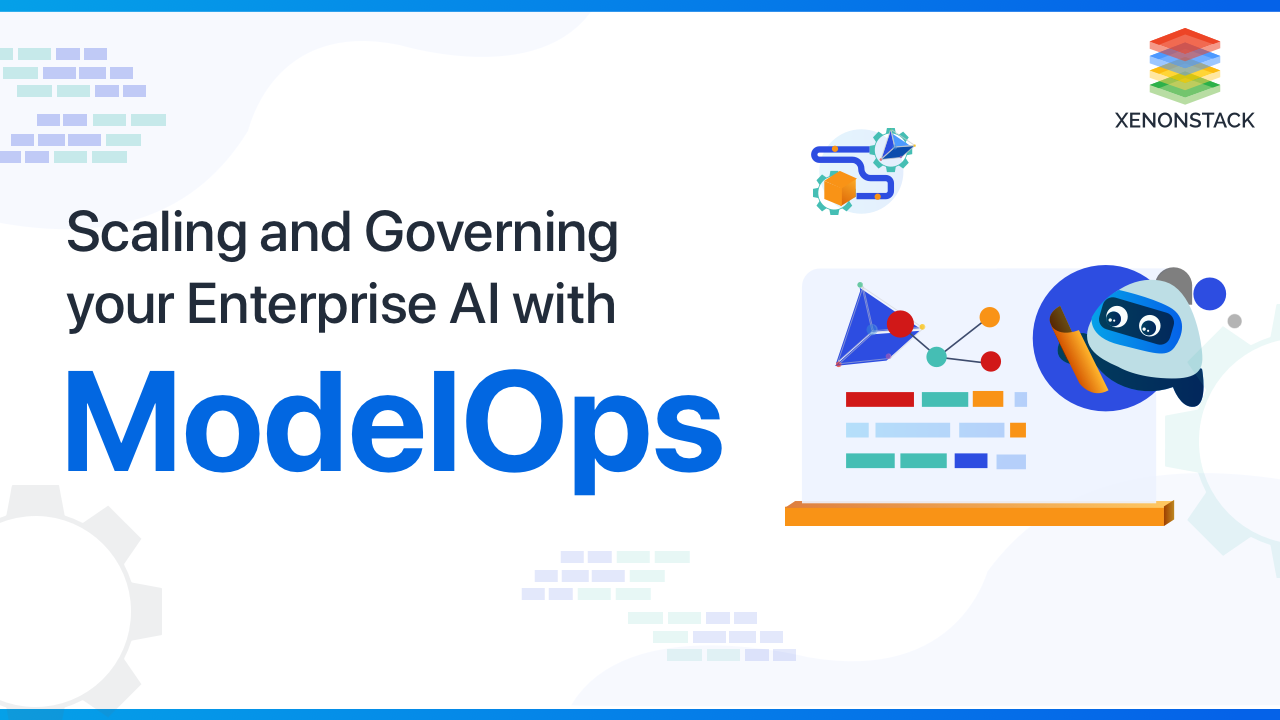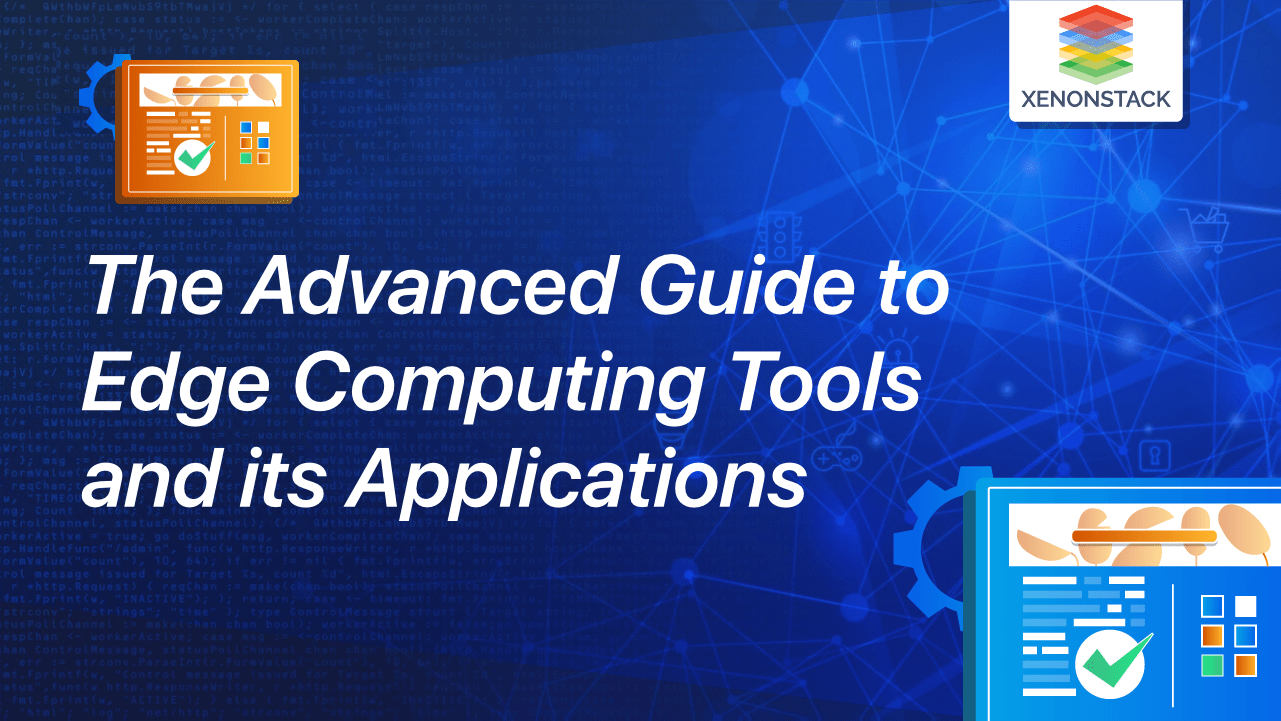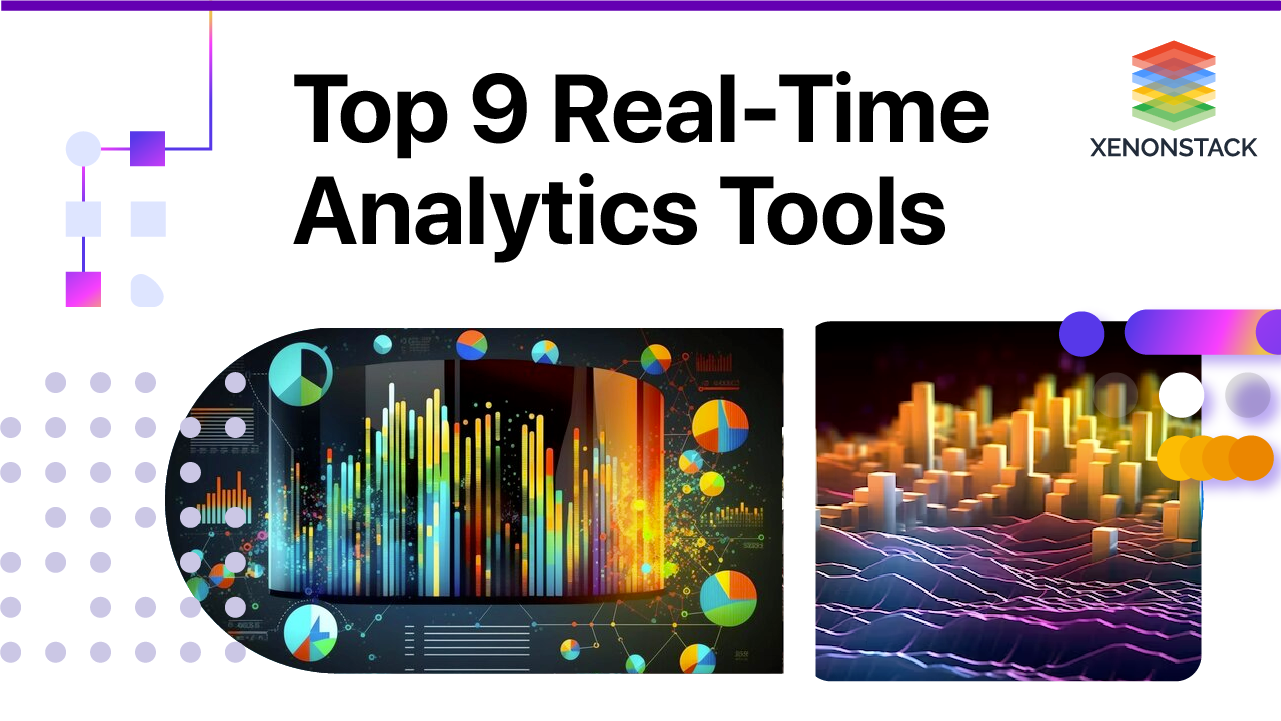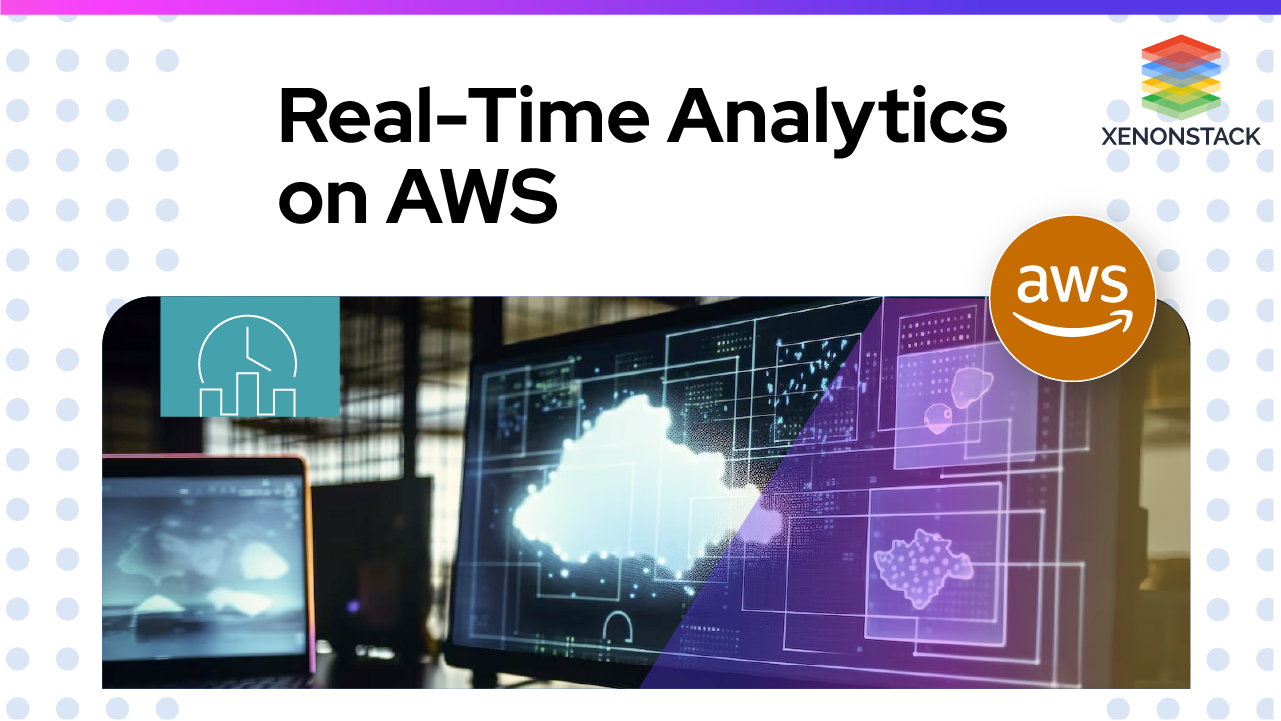
Introduction to ModelOps
“The real value of a machine learning (ML) model starts when it is deployed in production and the outputs generated by the model are available to the customer.”
The above statement sounds relaxed and straightforward, i.e., building a machine learning model and deploying it to production. According to VentureBeat, 87% of data science projects never reach production. It may sound scary to the C-suites or the organizations that want to adopt AI in their organization. Because building an Machine Learning model requires an investment of both money and time of the individuals involved in it.
It is where ModelOps comes into the picture. It is a practice that ensures a model is made into production, considering the required business KPIs and error metrics and ensuring that the deployed model delivers business value.
Model operationalization is focused primarily on the governance and life cycle management of a wide range of operationalized artificial intelligence. Click to explore our, What is ModelOps and its Operationalization?
ModelOps vs. MlOps
AI model operationalization is concerned with AI and decision models' governance and life cycle management (including models based on machine learning, knowledge graphs, rules, optimization, linguistics, and agents). ModelOps, unlike MLOps, which focuses solely on the operationalization of ML models, and AIOps (Artificial Intelligence for IT Operations), which is AI for IT operations, focuses on the operationalization of both AI and decision models.
Role of ModelOps in Scaling and Governing AI Initiatives
Below listed are the roles of Model operationalization in scaling and governing AI initiatives
Model Validation
ModelOps ensures that a suitable model will be deployed in production. An accurate model can be defined as one that satisfies the business requirements and generates output accordingly. For example, if a model needs to forecast the power for every 60 mins, it should forecast the power for every 60 mins, not 30 mins or 15 mins.
The maximum value of the forecasted power should equal the installed capacity, and the minimum value is 0. If there is a deviation in the range, then the model needs to be corrected.
Eases Model Deployment
The real challenge in scaling the Enterprise AI initiative is the model deployment. Ideally, while building a model, the data for research is stored in databases, or low latency is associated with it. The production scenario is entirely different. Generally, there is high latency of data that affects the model performance. So, while deploying a model in production, such factors need to be considered.
Automates Model Monitoring
ModelOps automates the model monitoring process. It involves automatically analyzing the business KPIs, error metrics, bias in data, etc. It ensures the peak performance of the model concerning the business requirements.
Alerts for Model Re-training
The performance of a model degrades periodically because the data changes with time, seasonality, or change in preferences. With continuous model monitoring, the alerts are generated to replace a non-performing model with the champion model. The model re-training is a practice inspired by software engineering, where software is released with different versions over time.
Provides a Robust Pipeline for Machine Learning
The governance mechanism of ModelOps ensures that the channel for doing machine learning is rich, and there should not be any hiccup in the flow. A typical Machine Learning pipeline is iterative and starts from understanding the business problem, data preparation, model building, model deployment, model monitoring, and model refinement.
Not limited to One Model
Model operationalization is not limited to one model. Meaning, every problem statement has its requirements, so the architecture of ModelOps can’t be generalized for a problem.
Timely Reporting of Performance
Model operationalization is not just about deployment and monitoring. It involves the statistics of the research data and production data, any issue at the customer site causing the deterioration in performance, etc. It also ensures that the model performance should be timely reported, which means when the model performs well and the period when it performs poorly with proper reasoning.
Multi-Cloud Model operationalization is the latest approach to the operationalization of models in applications and the synchronization between applications and model pipelines. Click to explore our, Multi-Cloud ModelOps Benefits, and Features
How ModelOps operationalize AI?
Model operationalization is a term that refers to the operationalization of all AI models, and MLOps is a term that refers to the operationalization of ML models.
Why ModelOps?
- Control Risk: To keep track of the model's real-time efficiency, retrain it, and revalidate it.
- Shorten Models Time to Business: Increasing the likelihood that more computational models will be applied will generate market value more efficiently.
- Increase Transparency: Market leaders may use Model operationalization software to get dashboards, monitoring, and statistics. This provides teams with the transparency and control they need to collaborate on AI at scale.
- Unlock values of AI investments: More than half of AI products never go into manufacturing due to inadequate model operating processes. ModelOps Center automates the administration, maintenance, and monitoring of post-development AI/ML models.
How AI/ML Models are challenging Enterprise Assets?
Complex business and technical relationships
A company-wide operating flow for models is close to instituting KPIs to calculate IT service delivery using ServiceNow goods. Businesses will face difficulties and complexities that businesses must resolve.
Critical roles in frequent business decisions
If ML progresses from science to practical applications, we must develop its operating processes.
Unpredictable Shelf Life
Challenge checks have been used to assess a product's shelf life. The effects of particular factors on growth and proliferation are examined in these studies.
Increasing Role in Enterprise strategy
There is a growing need to operationalize the model production process as businesses and large organizations scale up their models. Models like DevOps must be developed, integrated, deployed, and tracked.
Explore the complete guide to Enterprise Machine Learning and its Use Cases
How each model has its life cycle and KPI's?
One of the most significant barriers to AI adoption in industries is a lack of confidence in AI models. Black-box models act as black-boxes, meaning the logic behind their forecasts is not understandable. Data used to train the model didn't have a sufficiently representative set, specific AI models have prejudice toward one or more features or a class of customers.
Aside from questions about fairness and explainability, AI models suffer from "model drift," which occurs when the output (or runtime) data no longer resembles the initial training data used to train the model. Model drift will make a model obsolete, necessitating an immediate need to retrain and redesign the model to retain the utility it provides.
Model Retraining
An AIOps team can quickly detect device regression or data by tracking deployed models in development and triggering model retraining behavior.
Quality (or accuracy)
The consistency control (or accuracy monitor) compares model forecasts to ground reality results to determine how accurately the AI model predicts outcomes (labeled data).
Fairness
To be used in the development, AI models must make fair decisions. They can't be biassed about their recommendations or risk putting the company in danger in terms of legal, financial, and reputational issues.
Explainability
Watson OpenScale's explainability function allows business users to embed AI models in their applications to understand better which variables led to an AI result for a given transaction. To satisfy regulatory requirements and consumer standards for accountability, a company must provide clarification.
Drift
Unique features of a model's relevance and effect change over time. This has an impact on the applications involved and the market results that follow.
Model Risk Management
Model risk is a category of risk where a statistical model is used to forecast and quantify quantitative details. The model doesn't work well, resulting in poor results and substantial operational costs.
Read here about Machine learning Platforms with Services and Solutions
Model Life Cycle across the AI Enterprises
The MLC Manager allows for more excellent stability in handling and automating model life cycles across the enterprise. Each enterprise model may follow a range of pathways to development, have varying reporting patterns, and go through various quality improvement or retirement stages.
There are many ways to automate different MLC Processes. ModelOps Command Center can be programmed to use MLC processes behind the scenes. The Model operationalization command center can upload a model for productionization from the Model Details screen.
Model Productionization
MLC Processes can automate the productionization of a model. They can be tailored to the team's specific requirements. For example, you can use an MLC Process to deploy a newly registered model into QA before it goes into production.
Model Refresh & Retraining
After the initial launch, it's critical to quickly retrain or refresh a model to ensure it's running at its best. Within an MLC method, retraining may be automated to operate on a schedule or when new labeled data becomes usable. The MLC Process will simplify Change Management processes such as retesting and permissions.
Approval & Tasks
You may use User Tasks in the MLC Process to guide individual team members or functions to review and support model changes. Model metadata should be used in approvals and assignments to provide context.
Monitoring Models
Models can be monitored using MLC Processes by running Batch Jobs on them automatically. Batch Jobs may be run regularly or as new branded or ground truth data becomes available.
What is Modelops Center?
Model operationalization Center is a tool that automates the governance, management, and orchestration of AI models across networks and teams, resulting in AI decision-making that is efficient, compliant, and scalable.
What are its Business Challenges?
The complexities of handling AI models are growing as businesses become more dependent on AI models to transform and reimagine their businesses. Multiple model development teams, resources, and systems result in a long and expensive time to completion, model and data consistency problems, and complex and manual processes that fail to meet governance and regulatory criteria. Owing to a lack of ModelOps, more than half of all models never make it into production.
Click to read about Data Preparation Roadmap
What are the best ModelOps Solutions?
Model operationalization Center automates the governance, monitoring, and orchestration of AI models across networks and teams. Real-time analysis guarantees precise and trustworthy inferences and insights. Auditability and reproducibility are enhanced by detailed monitoring of model shifts.
Product Details
Model operationalization must be a disciplined and long-lasting operation. ModelOps Center gives you the visibility, governance, and automation you need to make flexible and trustworthy AI decisions.
Control
A central production model inventory is managed for all models. Training info, snapshots of model root, model documents, model versions, jobs performed, and test measurements and outcomes can all be obtained and managed for each model.
Monitor
Model output problems are automatically detected and remedied. Alerts focused on specified thresholds keep you up to date on possible and current issues. Remediation actions, if required, initiate retraining, retesting, and redeployment.
Govern
Integration of data science software, risk management frameworks, and IT systems and processes. End-to-end product lineage ensures complete auditability and reproducibility. Continuous enforcement checks implement the governance mechanism.
Automate
Using predefined product life cycles that cover both engineering and business processes and KPIs. Customize workflows to suit the unique requirements. Workflows can be replicated across departments, enabling them to collaborate and interoperate.
Visualize
Gain insight into the operating state of all models around the organization. Real-time visibility of model results against the statistical, market, and risk thresholds. Rich metadata and application metrics maintained for each platform make it simple to build custom views and reports.
New Roles to Scale and Govern AI Enterprises
Enterprise AI Architect
- Defines the model operationalization architectural approach and best practices.
- Model Life Cycles Designs
Model Operators
- Ensures that models are operational and meeting business, technological, and enforcement KPIs 24 hours a day, seven days a week.
- User of the ModelOp Center
Discover here about MLOps Roadmap for Interpretability
Explore more about Privacy-Preserving AI with a Case-Study


